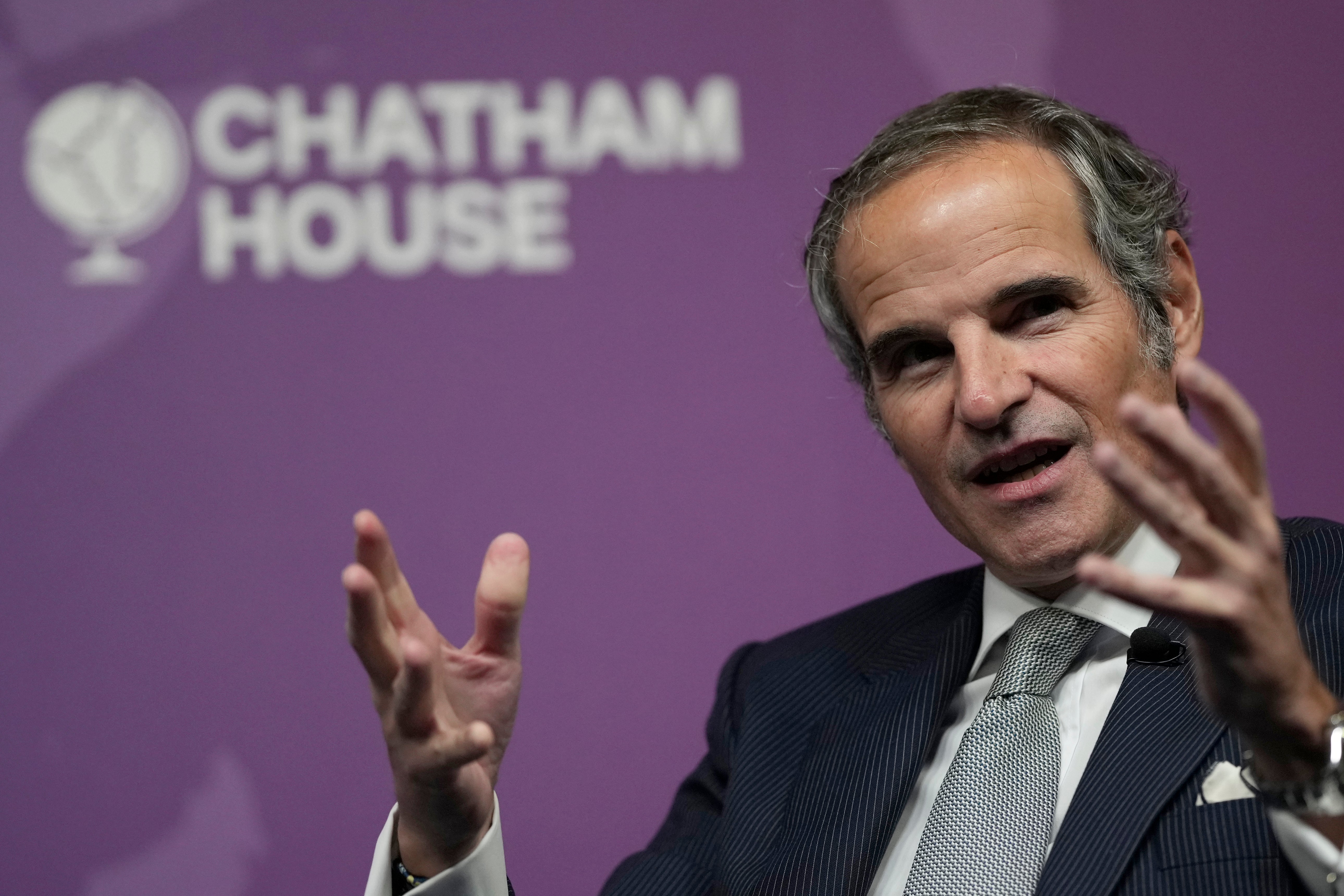UN nuclear watchdog head to go to Iran for high-level talks
The U.N. nuclear watchdog says that its director-general will travel to Tehran for high-level meetings at the invitation of Iran’s government

Your support helps us to tell the story
From reproductive rights to climate change to Big Tech, The Independent is on the ground when the story is developing. Whether it's investigating the financials of Elon Musk's pro-Trump PAC or producing our latest documentary, 'The A Word', which shines a light on the American women fighting for reproductive rights, we know how important it is to parse out the facts from the messaging.
At such a critical moment in US history, we need reporters on the ground. Your donation allows us to keep sending journalists to speak to both sides of the story.
The Independent is trusted by Americans across the entire political spectrum. And unlike many other quality news outlets, we choose not to lock Americans out of our reporting and analysis with paywalls. We believe quality journalism should be available to everyone, paid for by those who can afford it.
Your support makes all the difference.The U.N. nuclear watchdog said Thursday that its director-general will travel to Tehran for high-level meetings at the invitation of Iran’s government.
The announcement by the Vienna-based International Atomic Energy Agency comes days after it reported that uranium particles enriched up to 83.7% were found in Iran’s underground Fordo nuclear site.
The IAEA tweeted that Director-General Rafael Mariano Grossi would hold a news conference upon his return from Iran to Vienna on Saturday.
The confidential quarterly report by the IAEA, which was distributed to member states on Tuesday, likely will raise tensions further between Iran and the West over its nuclear program.
The IAEA report described inspectors discovering on Jan. 21 that two cascades of IR-6 centrifuges at Iran’s Fordo facility had been configured in a way “substantially different” to what had been previously declared. The IAEA took samples the following day, which showed particles with up to 83.7% purity, the report said.
The IAEA report only spoke about “particles,” suggesting that Iran isn’t building a stockpile of uranium enriched above 60% — the level it has been enriching at for some time. However, the agency also said in its report that it would “further increase the frequency and intensity of agency verification activities” at Fordo after the discovery.
Iran has been producing uranium enriched to 60% purity — a level for which nonproliferation experts already say Tehran has no civilian use.
Uranium at nearly 84% is almost at weapons-grade levels of 90% — meaning any stockpile of that material could be quickly used to produce an atomic bomb if Iran chooses.
Iran’s 2015 nuclear deal limited Tehran’s uranium stockpile to 300 kilograms (661 pounds) and enrichment to 3.67% — enough to fuel a nuclear power plant. The U.S. unilaterally withdrew from the accord in 2018.
Iran long has denied ever seeking nuclear weapons and maintains its program is peaceful.
Grossi's last visit to Iran was in March 2022.